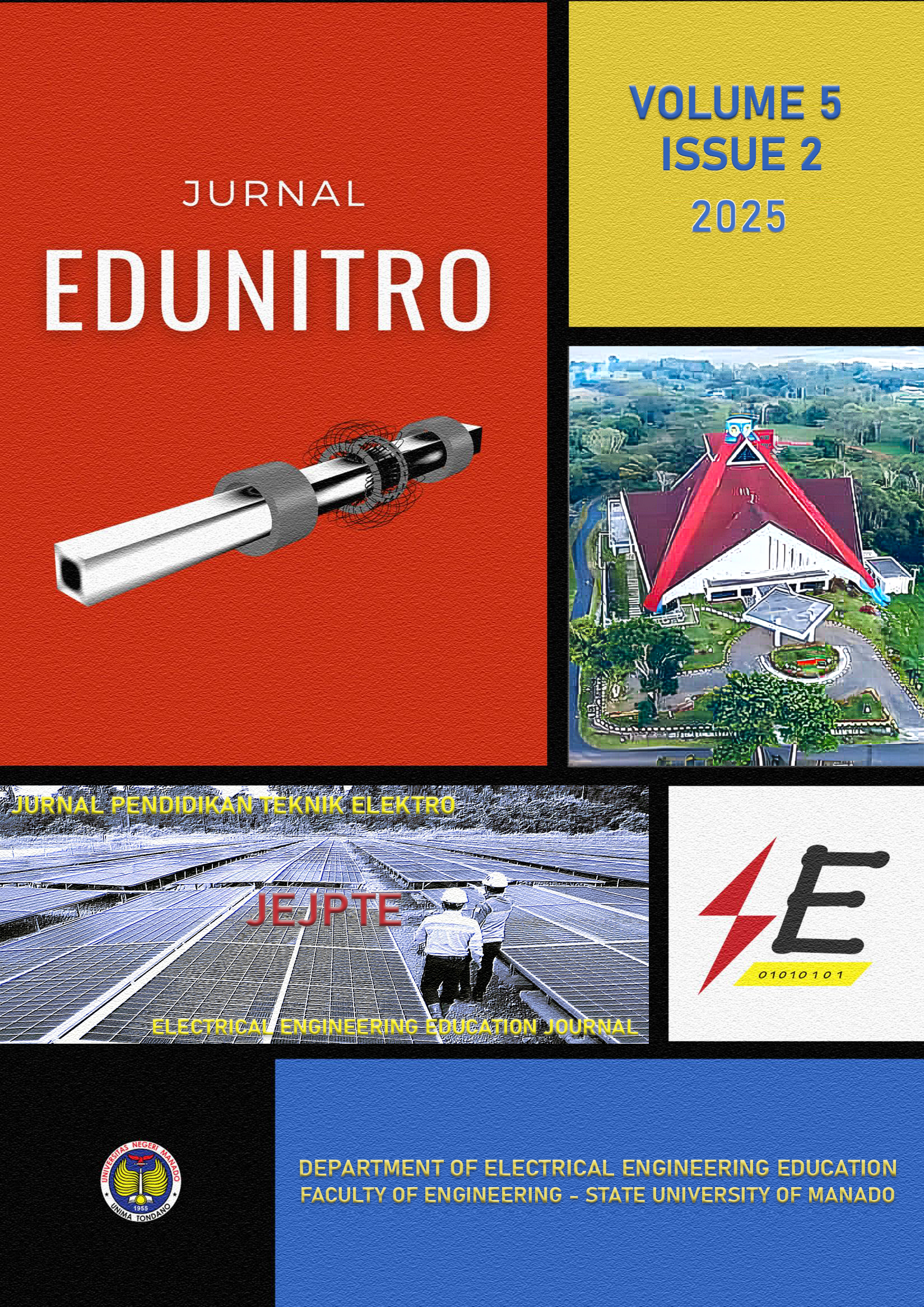Economic Analysis of Electrical Energy in the Development of Tomohon City as a Tourism Hub
Main Article Content
Abstract
The development of Tomohon City as a tourism hub in North Sulawesi has accelerated significantly, triggering a surge in economic activities and consequently increasing the demand for electrical energy. This study aims to analyze the relationship between economic growth and electricity consumption in Tomohon City, identifying the implications for energy infrastructure planning. A descriptive survey method was employed, using secondary data sourced from the Central Statistics Agency and PT PLN. Data on electricity supply and economic indicators such as Gross Regional Domestic Product (GRDP) were presented in tables, graphs, and diagrams to illustrate growth patterns from 2010 to 2021. Findings reveal that both electricity consumption and installed capacity have increased steadily, with electricity sales rising from 38.4 GWh in 2014 to 48.3 GWh in 2020 and customer numbers increasing from 24,575 to 29,770 over five years. Economic indicators such as GRDP also showed consistent growth, particularly in the tourism, trade, and accommodation sectors. The average annual growth in electricity production was 4.68%, highlighting the need for proactive energy planning. The study concludes that the economic development of Tomohon City is positively correlated with rising electricity demands. It recommends that stakeholders, including PT PLN and local government bodies, develop anticipatory infrastructure strategies to ensure sustainable energy supply, particularly as tourism continues to expand. This research provides critical insight into aligning energy provision with regional economic development priorities.
Article Details

This work is licensed under a Creative Commons Attribution 4.0 International License.

